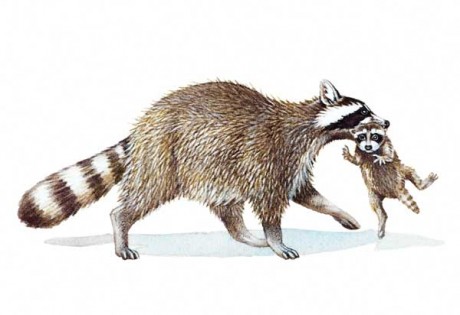“No Vacancy” signs for wildlife visitors
You have little control over what passes through your yard, but you don’t have to roll out a red carpet.
By Carole Howell
It was clear from the noxious odor that we had company, and it was close by. "Eau de Polecat" was how my husband described it, because it was certainly not perfume. I was afraid to let the dog out, since he hadn't learned from three previous experiences that skunks mean business. I saw no reason to invite trouble.
But we were inviting trouble by leaving cat food outside overnight and by not securing our crawlspace. Fortunately we acted before our guest decided to stay.
Most of us enjoy watching wildlife, but if they hang around, they may move in.
While you're sleeping, wild animals are awake and foraging. Come fall, animals begin looking for warm shelter and a place to give birth in the spring.
A wildlife invasion of your home can be both dangerous and expensive. Wild animals leave droppings and chew wiring. Some spread diseases; all spread fleas and parasites. The services of an animal removal service, decontamination, and home repairs can total thousands of dollars. Depending on the extent and type of damage, some homeowner's insurance policies cover it and others don't.
"A raccoon can disconnect all of your attic ductwork in a week," says biologist Austin Tate, North Carolina-Virginia district manager for Trutech Wildlife Removal. "So it's important to act quickly."
Signs of invasion
Indicators of an infestation, Tate says, are sounds that include scratching, gnawing, boards creaking, running and screeching. "Flying squirrels make a lot of noise at night because they're nocturnal and live in colonies — like a hockey game in the attic. Sometimes you will smell ammonia from urine or observe guano, bat feces, scattered down the side of your house."
Rodent droppings in your kitchen cabinets indicate a mouse or rat problem, which can quickly get out of hand. Snakes interested in mice as food may soon follow.
Entry typically begins with a small opening. Even new construction can be susceptible to animal entry through gable vents, construction gaps and loose soffits. An older home with little or no insulation invites animals entering from the crawlspace to make their way to the attic.
There are several things homeowners can do to keep wild animals out, and it starts by making your home less inviting.
Don't feed them
According to Tate, wildlife invasions commonly start with raccoons, opossums and mice visiting the back porch where pet food is present. He recommends taking uneaten food in at night, hanging birdfeeders at a reasonable distance from the house and keeping trash cans covered tightly.
No entry
Inspect the outside of your house for possible openings. Many animals can enter through a very small space, Tate says. "Anything that's not secure, such as a loose vent, makes an easy entry. Another common scenario is a smaller animal getting in through a small space and a larger animal enlarging the hole and coming in behind them. Tree branches too close to the roof make an easy bridge to attic openings."
No mothballs
Many products touted as deterrents are unproven, and may even be harmful to pets — mothballs, for example. Tate says his team finds them in almost every yard and attic they see. "Our team often arrives on the scene to see noisemakers and chemicals, evidence of the homeowner's own attempts to repel or remove wildlife," he says.
He stressed that homeowners should never try to capture any wildlife, since animals can be extremely dangerous when cornered.
Get a pro
Usually the solution to univited wildlife guests starts with an inspection by a professional trained to deal with prevention, removal, cleanup, decontamination and repair. Choose a wildlife removal service that guarantees specially trained staff, is licensed in North Carolina as a damage control agent, and has proper liability and workers' compensation insurance. The Better Business Bureau is a good source.
-
Share this story:
{ampz:Custom share for module}